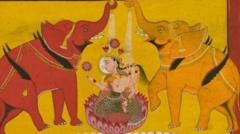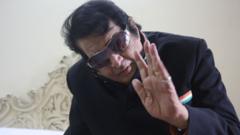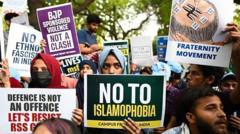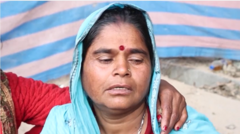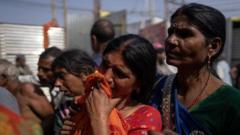This week, an awe-inspiring assembly of around 400 million Hindu pilgrims from various corners of the globe is convening in Prayagraj, India. Known as the Maha Kumbh Mela, this extraordinary religious festival is widely recognized as the largest human gathering on the planet. Set along the sacred banks of the Ganges and Yamuna rivers, the festival is part of a tradition that dates back centuries, highlighting the spiritual significance of holy bathing and purification rituals.
The Maha Kumbh Mela: A Global Pilgrimage to Purification

The Maha Kumbh Mela: A Global Pilgrimage to Purification
As the Maha Kumbh Mela unfolds in Prayagraj, India, the event brings together an unprecedented wave of Hindu pilgrims, showcasing a rich tapestry of faith, culture, and unity.
The Maha Kumbh Mela takes place every twelve years and is rooted in a Hindu legend about the pursuit of immortality between gods and demons. The festival's centerpiece is the practice of taking holy baths believed to cleanse participants of their sins. This year, officials predict that the event will attract more visitors than the entire population of the United States over a span of six weeks—a logistical feat for local authorities who aim to ensure public safety amidst such a vast congregation.
In addition to its profound religious importance, the Mela has grown into a significant political occasion, particularly with the recent rise of Hindu nationalism, supported by the ruling political party led by Prime Minister Narendra Modi. This convergence of spirituality and politics marks a historic turning point in the festival's evolution.
Participants arrive from near and far, engaging in vibrant processions adorned with traditional attire, singing, dancing, and displaying ceremonial weapons, showcasing the rich diversity of Hindu culture. The sacred juncture where the Ganges, Yamuna, and the mythical Saraswati rivers meet acts as a significant pilgrimage site, drawing devotion and reverence from millions seeking spiritual renewal.
In addition to its profound religious importance, the Mela has grown into a significant political occasion, particularly with the recent rise of Hindu nationalism, supported by the ruling political party led by Prime Minister Narendra Modi. This convergence of spirituality and politics marks a historic turning point in the festival's evolution.
Participants arrive from near and far, engaging in vibrant processions adorned with traditional attire, singing, dancing, and displaying ceremonial weapons, showcasing the rich diversity of Hindu culture. The sacred juncture where the Ganges, Yamuna, and the mythical Saraswati rivers meet acts as a significant pilgrimage site, drawing devotion and reverence from millions seeking spiritual renewal.



